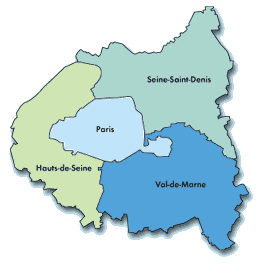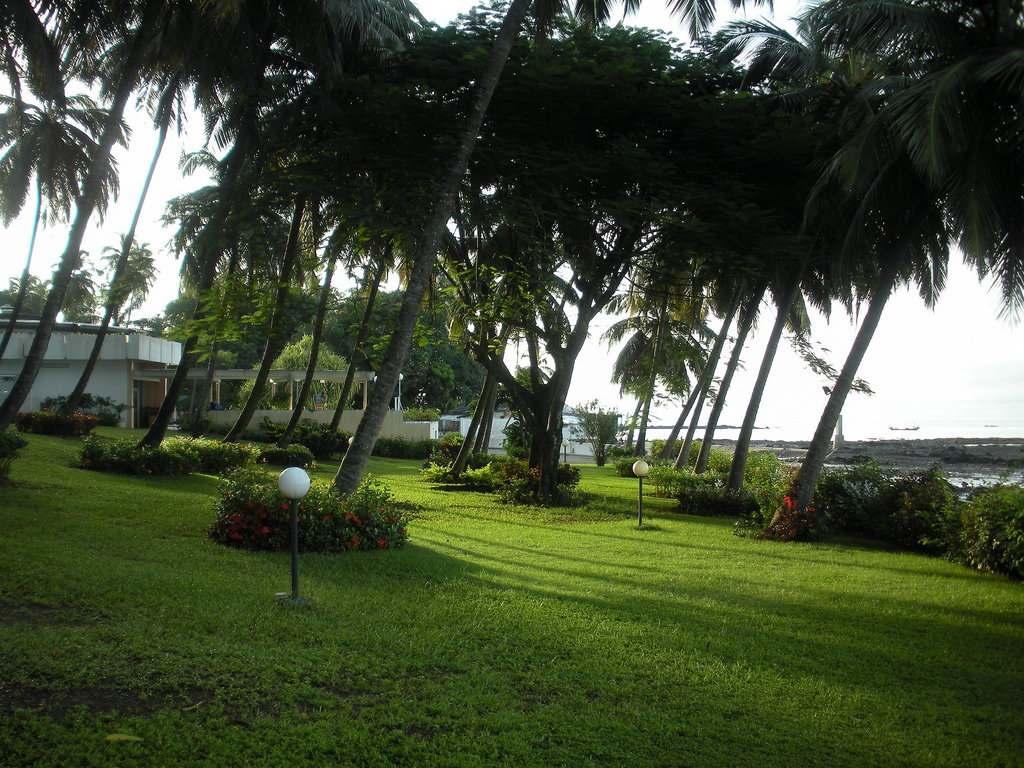|
Atelier LWD
Atelier LWD was an architecture studio led by Guy Lagneau, Jean Dimitrijevic and Michel Weill that was active from 1952 to 1985. It later took the name of "Atelier d'Etudes Architecturales" (ATEA) (Architectural Studies Workshop) with the addition of Paul Cordoliani, Henri Coulomb (1927–2006), Renzo Moro and Ivan Seifert (1926–2008). The studio originated many public buildings in France and Africa. History Guy Lagneau (1915–1996) and Michel Weill (1914–2001) met in the studio of Auguste Perret in the National School of Fine Arts established in 1943. They participated with Perret in the reconstruction of Le Havre from 1946, work that was later declared a World Heritage Site by UNESCO. Laigneau was particularly influenced by Scandinavian architecture, especially steel. Jean Dimitrijevic (1926–2010) joined the agency in 1947 after meeting Guy Lagneau in a Fine Arts workshop he was running. He graduated in 1957 and completed his training at the Massachusetts Institute ... [...More Info...] [...Related Items...] OR: [Wikipedia] [Google] [Baidu] |
Guy Lagneau
Guy Lagneau (1915 – 16 December 1996) was a French architect, one of the founders of Atelier LWD, who was involved in many major projects in France and Africa. Early years Guy Lagneau was born in 1915. He was a pupil and admirer of the architect Auguste Perret, whose later reconstruction of Le Havre (which was devastated during World War II) was declared a World Heritage Site by UNESCO. He participated in setting up the Pavillon of Modern Times for the International Exposition of 1937. As a student at the École des Beaux-Arts, in the Perret-Courtois studio, he designed a hotel at the edge of a lake, with a symmetrical but rhythmic structure of exposed reinforced concrete. This design was published in 1942 in a polemic article written by Michel Roux-Spitz, an opponent of traditionalist architecture. Lagneau played a very active role in the 3rd Perret studio in the 1942–1954 period, following the advice of Le Corbusier. Lagneau was among the architects who collaborate ... [...More Info...] [...Related Items...] OR: [Wikipedia] [Google] [Baidu] |
Senegal
Senegal,; Wolof: ''Senegaal''; Pulaar: 𞤅𞤫𞤲𞤫𞤺𞤢𞥄𞤤𞤭 (Senegaali); Arabic: السنغال ''As-Sinighal'') officially the Republic of Senegal,; Wolof: ''Réewum Senegaal''; Pulaar : 𞤈𞤫𞤲𞤣𞤢𞥄𞤲𞤣𞤭 𞤅𞤫𞤲𞤫𞤺𞤢𞥄𞤤𞤭 (Renndaandi Senegaali); Arabic: جمهورية السنغال ''Jumhuriat As-Sinighal'') is a country in West Africa, on the Atlantic Ocean coastline. Senegal is bordered by Mauritania to the north, Mali to the east, Guinea to the southeast and Guinea-Bissau to the southwest. Senegal nearly surrounds the Gambia, a country occupying a narrow sliver of land along the banks of the Gambia River, which separates Senegal's southern region of Casamance from the rest of the country. Senegal also shares a maritime border with Cape Verde. Senegal's economic and political capital is Dakar. Senegal is notably the westernmost country in the mainland of the Old World, or Afro-Eurasia. It owes its name to the ... [...More Info...] [...Related Items...] OR: [Wikipedia] [Google] [Baidu] |
Bamako
Bamako ( bm, ߓߡߊ߬ߞߐ߬ ''Bàmakɔ̌'', ff, 𞤄𞤢𞤥𞤢𞤳𞤮 ''Bamako'') is the Capital city, capital and largest city of Mali, with a 2009 population of 1,810,366 and an estimated 2022 population of 2.81 million. It is located on the Niger River, near the rapids that divide the upper and middle Niger valleys in the southwestern part of the country. Bamako is the nation's administrative centre. The city proper is a Cercles of Mali, cercle in its own right. Bamako's Inland port, river port is located in nearby Koulikoro, along with a major regional trade and conference center. Bamako is the seventh-largest West Africa, West African urban center after Lagos, Abidjan, Kano (city), Kano, Ibadan, Dakar, and Accra. Locally manufactured goods include textiles, processed meat, and metal goods as well as mining. Commercial fishing occurs on the Niger River. The name Bamako ( ''Bàmakɔ̌'' in Bambara language, Bambara) comes from the Bambara word meaning "crocodile river". ... [...More Info...] [...Related Items...] OR: [Wikipedia] [Google] [Baidu] |
Essonne
Essonne () is a department of France in the southern Île-de-France region. It is named after the river Essonne. In 2019, it had a population of 1,301,659 across 194 communes.Populations légales 2019: 91 Essonne INSEE Essonne was formed on 1 January 1968 when was split into smaller departments. Its prefecture is . Its [...More Info...] [...Related Items...] OR: [Wikipedia] [Google] [Baidu] |
Longjumeau
Longjumeau () is a commune in the southern suburbs of Paris, France. It is located from the center of Paris. Inhabitants of Longjumeau are known as ''Longjumellois'' (). History Longjumeau Party School In 1911, Lenin founded the Longjumeau Party School to provide instruction to selected militants of the Russian Social Democratic Workers Party who would travel from Russia to attend. There were 18 students, with three each from Moscow and St Petersburg, with the rest coming from across the Russian Empire. Lenin was the principal lecturer delivering 56 lectures on diverse subjects. Other instructors included: Nikolai Semashko, David Riazanov, Charles Rappoport, Inessa Armand, Zdzisław Leder pl, and Anatoli Lunacharsky. Population Transport Longjumeau is served by three stations on Paris RER line C: Longjumeau, Gravigny – Balizy and Chilly Mazarin RER, which are peaceful due to the low transit. Education the six communal preschools (''écoles maternelles'') ... [...More Info...] [...Related Items...] OR: [Wikipedia] [Google] [Baidu] |
Maspalomas
Maspalomas () is a tourist resort in the south of the island of Gran Canaria, Canary Islands, stretching from Bahía Feliz in the east to Meloneras in the west, including the resort towns of San Agustín and Playa del Inglés and San Fernando. Maspalomas constitutes the southernmost part of the municipality of San Bartolomé de Tirajana, and of the island. Overview Before the era of tourism, ''Maspalomas'' was the name of a hamlet in what today is San Fernando de Maspalomas. Its name may derive from that of Rodrigo Mas de Palomar, a settler and soldier from Majorca, or from Francisco Palomar, a Genoese friend of Alonso Fernandez de Lugo who purchased 87 Guanche slaves from Güímar and settled in the area. Present-day Maspalomas is the result of an ambitious development project, organized in the form of an International Ideas Contest (opened to any member of the International Union of Architects), held in 1961 under the auspice of Alejandro del Castillo, owner and promoter o ... [...More Info...] [...Related Items...] OR: [Wikipedia] [Google] [Baidu] |
Cansado
Cansado ( ar, كانصادو) is a coastal town in north-western Mauritania on the Ras Nouadhibou peninsula. It is located in the Nouadhibou Department in the Dakhlet Nouadhibou region. It was built from scratch in the early 1960s for the staff administering the port and railhead for the iron ore mining company MIFERMA (Societe Anonyme des Mines de Fer de Mauritanie) as part of their iron mine development project at Zouérate. Nearby towns and villages include Uad Guenifa (), La Batterie(), Nouadhibou (), Bir Gandus (), Tanoudert () and Iouik (). See also * Railway stations in Mauritania Citizens of Mauritania have various transportation methods. Railways and highways connect major cities in the country. Mauritania is a coastal country so there are many ports along its coast and there are a few big rivers that run through the count ... Further reading * * External linksModernism in Cansado, Mauritania - 1966, Architectural Digest Populated places in Mauritania Dakhlet No ... [...More Info...] [...Related Items...] OR: [Wikipedia] [Google] [Baidu] |
Hauts-de-Seine
Hauts-de-Seine (; ) is a Departments of France, département in the Île-de-France Regions of France, region, Northern France. It covers Paris's western inner Banlieue, suburbs. It is bordered by Paris, Seine-Saint-Denis and Val-de-Marne to the east, Val-d'Oise to the north, Yvelines to the west and Essonne to the south. With a population of 1,624,357 (as of 2019)Populations légales 2019: 92 Hauts-de-Seine INSEE and a total area of 176 square kilometres (68 square miles), it is the second most List of French departments by population, highly densely populated department of France after Paris. It is the List of French departments by population, fifth most populous department in France. Its Prefectures in France, prefecture is Nanterre although Boulogne-Billancourt, one of its two Subprefec ... [...More Info...] [...Related Items...] OR: [Wikipedia] [Google] [Baidu] |
Fontenay-aux-Roses
Fontenay-aux-Roses () is a Communes of France, commune in the southwestern suburbs of Paris, France. It is located from the Kilometre Zero, center of Paris. In 1880 a girls school École Normale Supérieure was opened in the town. It was one of the most prestigious of Paris and even of whole France in term of scientific research. It became a mixed school in 1986, and was relocated to Lyon in 2000. Fontenay is the location of the Commissariat à l'énergie atomique, and former location of the first French nuclear reactor, Zoé (reactor), Zoé, and the first French tokamak, tokamak fusion experiment, Tokamak de Fontenay aux Roses, TFR. Name The commune name originates from a local spring-fed stream (Latin ''fons'', French ''fontaine'') in the hillside descending from the Châtillon plateau, with "of roses" added to distinguish this commune from numerous French communes named Fontenay. Climate The climate of Fontenay-aux-Roses is oceanic gradient. The observation stations u ... [...More Info...] [...Related Items...] OR: [Wikipedia] [Google] [Baidu] |
Boké
Boké is the capital city of Boké Prefecture within the Boké Region of Lower Guinea near the border with Guinea-Bissau. It is also a sub-prefecture of Guinea. Located along the Rio Nuñez which flows to its not-too-distant mouth on the Atlantic Ocean, Boké is a port. It is known for the Boké Museum, formerly a slave fort. The town is served by Boké Baralande Airport. As of 2014 the city and surrounding sub-prefecture had a population of 61,449 people. History According to the ''Encyclopædia Britannica'', 11th edition: This part of the Guinea coast was made known by the Portuguese voyagers of the 15th century. In consequence, largely, of the dangers attending its navigation, it was not visited by the European traders of the 16th-18th centuries so frequently as other regions north and east, but in the Rio Pongo, at Matakong (a diminutive island near the mouth of the Forekaria), and elsewhere, ''slave traders'' established themselves, and ruins of the strongholds they bui ... [...More Info...] [...Related Items...] OR: [Wikipedia] [Google] [Baidu] |
Hotel De France (Conakry)
The Grand Hotel de L'Independance (or Hotel GHI), formerly the Hotel de France, is a hotel in downtown Conakry, Guinea. The hotel was first opened in 1954 as the Hotel de France, with a modernistic design for the time. It was renamed the Grand Hotel de L'Independance when Guinea gained independence in 1958. The hotel was extensively renovated in 1996, operating under management by Novotel until 2013. History The hotel was built during the French colonial period in 19531954 as the first project of the Atelier LWD, with architects Guy Lagneau, Michel Weill and Jean Dimitrijevic. It was sited opposite the mayoral residence. The hotel was originally called the Hotel de France, renamed the Grand Hotel de L'Independance in 1958 when Guinea became independent of France. The hotel was given the Novotel name in 1996, after extensive renovations. Structure The original building was a long, seven-storied building, supported by pillars, with a restaurant located in a circular pavilion. T ... [...More Info...] [...Related Items...] OR: [Wikipedia] [Google] [Baidu] |



